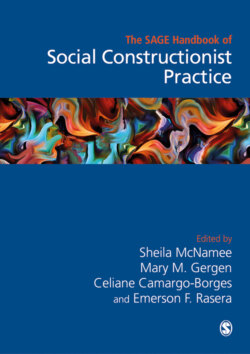Читать книгу The Sage Handbook of Social Constructionist Practice - Группа авторов - Страница 133
На сайте Литреса книга снята с продажи.
Socio-Material Practices
ОглавлениеA Pavlovian view of practice would probably stop at S-R (stimulus-response) habits, a focus of behavioural therapists for almost a century (e.g., Watson, 1925). This focus on ‘doing’ or the actions required for perpetuating a habit, omits any sayings and relatings. Sayings are what people say to themselves to justify or inform their doing of a socio-material practice – a normal target for cognitive therapists (Beck, 1979). Relatings tap into dimensions of value, affect, and goal-orientation (or ‘teleoaffectivity’ – see Schatzki, 2010) that relate the person to the practice. Psychological language like ‘compulsion’ partly captures this component, which mindfulness and acceptance-focused therapists (e.g., Roemer and Orsillo, 2010) emphasize. Socio-material practices, however, seldom refer to the discrete doings, sayings, or relatings these approaches to therapy target. They are responsive and typically recur in broader networks or assemblages where they seemingly take on lives of their own.
For Peter Sloterdijk (2013), ‘Every active person is dyed in the lye of their activities until the miracle of “second nature” takes place and they perform the near-impossible almost effortlessly’ (p. 321). Practices acquire their ‘second nature’ through becoming conjoined in networks and assemblages and then persist because they have a kind of life support system that extends beyond the person caught up as part of sustaining them. To illustrate, systemic therapy which sought to change unwanted family practices, tends to be up against other practices engaging the family beyond the consulting room (Dreier, 2008). Thus, a change focus on a specific practice may seem like bucking the tide for being part of a greater network or assemblage of practices.
